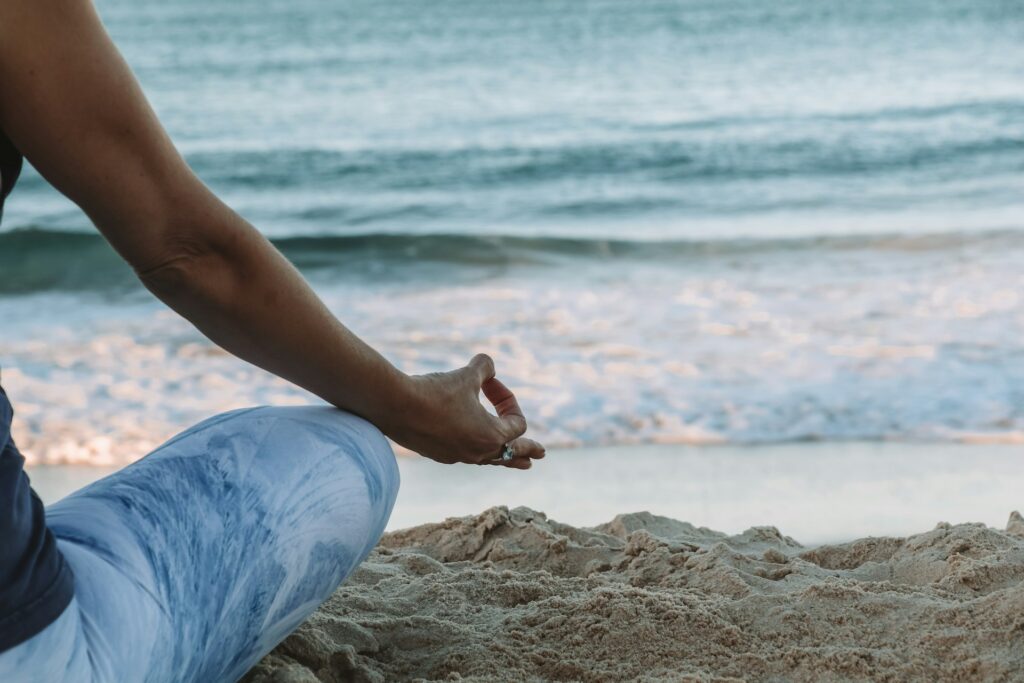When I brought home Luna—a German Shepherd mix with comically large, satellite-dish ears—I thought I was rescuing her. Turns out, she was rescuing me from a world I’d been sleepwalking through, one muffled conversation and missed moment at a time.
It started with the little things. Luna would cock her head at sounds I couldn’t even detect, her ears swiveling like radar dishes scanning the horizon. She’d alert to our neighbor’s car pulling into the driveway a full minute before I heard the engine. She knew when my partner was coming up the stairs before his key hit the lock. And she’d freeze mid-play, head tilted, picking up on sounds that existed entirely outside my awareness.
That’s when I realized something unsettling: I wasn’t really listening to my world anymore.
The Wake-Up Call I Didn’t Know I Needed
Like most people juggling work, relationships, and the constant ping of notifications, I’d developed what I now call “selective hearing syndrome.” Not the kind your spouse jokes about when you miss the grocery list—the kind where you’re physically present but acoustically absent, where your ears are open but your attention is somewhere else entirely.
Watching Luna navigate the world through her incredible hearing made me acutely aware of how much I was missing. Dogs can hear sounds up to 65,000 Hz compared to our human limit of about 20,000 Hz, and their hearing is about four times more sensitive than ours. But it wasn’t just Luna’s superior frequency range that fascinated me—it was how she listened with her entire being.
When Luna heard something interesting, she didn’t just turn her head. Her whole body became a listening instrument. Her ears would prick forward, her breathing would slow, and she’d enter this state of complete auditory presence that I envied. She wasn’t multitasking or half-listening while mentally composing her response. She was simply, fully, there.
The Human Hearing Dilemma We Don’t Talk About
Here’s something I discovered during my journey into better listening: most of us are walking around with compromised hearing awareness, and we don’t even know it. Not necessarily because of damage (though that’s increasingly common), but because we’ve trained ourselves to tune out.
Our modern environment bombards us with constant noise—traffic, construction, notifications, conversations, music, machinery. To cope, our brains have become incredibly good at filtering. Too good, perhaps. We’ve become so efficient at blocking out “unnecessary” sounds that we sometimes block out the necessary ones too.
I started noticing this in my daily life. How often I’d ask “What?” not because I couldn’t hear, but because I wasn’t listening. How I’d miss the subtle changes in my partner’s voice that indicated stress or excitement. How I’d completely tune out the birds outside my office window, the distant laughter of children, the gentle hum of life happening all around me.
Luna didn’t have this problem. Every sound was worth investigating, at least briefly. She reminded me that our ears aren’t just for hearing—they’re for connecting with the world.
Lessons from the Dog Park: A Master Class in Mindful Listening
Some of my biggest insights came from simply observing Luna at the dog park. While other dogs were busy sniffing and playing, Luna would often pause and just… listen. She’d track sounds I couldn’t perceive, her ears moving independently like twin periscopes.
Dogs can pinpoint the exact location of sounds and can hear sounds four times farther away than humans, but watching Luna taught me that superior hearing ability isn’t just about frequency range or sensitivity. It’s about attention and intention.
Luna listened the way I wanted to learn to listen—without judgment, without planning her response, without the constant internal chatter that drowns out subtlety. She listened to understand, not to reply.
This observation led me to experiment with what I started calling “Luna listening” in my own life. During conversations, I began practicing the kind of full-body attention I’d witnessed in my dog. I stopped formulating responses while others were speaking. I listened not just to words, but to tone, pace, the spaces between sentences.
The results were remarkable.
The Art of Acoustic Awareness: What I Learned About Really Listening
Listening isn’t passive. This was perhaps the biggest revelation. Mindful listening requires being present in conversation so others feel heard, and involves paying attention to both what someone is saying and what they’re trying to communicate beyond words. Luna showed me that good listening is an active, intentional practice.
Your environment affects your ability to listen. Luna was more alert and focused in quiet spaces, less reactive in noisy ones. I started paying attention to my own acoustic environment and how it affected my ability to connect with others. I began choosing restaurants with better acoustics for important conversations, creating quieter spaces in my home, and being more mindful about when and where I engaged in meaningful dialogue.
Listening fatigue is real. Just as Luna would eventually need breaks from high-alert listening, I realized that our ears and attention need rest too. The constant noise of modern life can be exhausting in ways we don’t always recognize. I started building “acoustic breaks” into my day—moments of intentional quiet where I could reset my listening capacity.
Hearing health goes beyond avoiding loud noises. While protecting your ears from damage is crucial, I discovered that true auditory wellness includes practicing active listening, being aware of your acoustic environment, and maintaining the neural pathways that help us process and make meaning from sound.
Small Changes, Big Differences: My Daily Listening Practice
Inspired by Luna’s natural listening wisdom, I developed some simple practices that have genuinely changed how I experience the world:
The Morning Sound Check: Before grabbing my phone or diving into the day’s tasks, I spend two minutes just listening. What sounds can I identify? Traffic patterns, bird songs, the neighbor’s coffee grinder, my partner’s breathing. It’s become my daily reminder that there’s a rich auditory world happening around me at all times.
The Luna Pause: In conversations, especially important ones, I’ve started taking what I call “Luna pauses”—brief moments where I stop, breathe, and listen with the same focused attention my dog demonstrates. It’s amazing how much more I hear when I’m not planning what to say next.
Acoustic Environment Awareness: I pay attention to how different spaces affect my ability to listen and be present. I’ve rearranged my home office to reduce echo, started meeting friends in quieter cafes, and learned to advocate for better acoustic conditions in meetings.
The Sound Appreciation Walk: At least once a week, Luna and I take a walk where the goal isn’t exercise or destination—it’s listening. I try to identify and appreciate sounds I usually ignore: wind in different types of trees, variations in bird calls, the unique acoustic signature of different neighborhoods.
When Your Ears Need Extra Attention
Through this journey, I’ve become much more aware of when my hearing feels “off”—whether from congestion, fatigue, stress, or just the general overwhelm of modern life. Luna taught me that changes in hearing sensitivity can affect everything from mood to relationships to overall well-being.
I’ve learned to pay attention to signs that my ears need some TLC: difficulty following conversations in noisy environments, feeling more tired after social interactions, missing subtleties in familiar voices, or finding myself asking “what?” more often than usual.
While I can’t diagnose or offer medical advice, I’ve found that lifestyle factors make a real difference in how well I hear and process sound. Getting enough sleep, managing stress, staying hydrated, and taking breaks from noisy environments all seem to help. When I’m concerned about changes in my hearing, I make sure to discuss them with a healthcare professional who can provide proper guidance.
How Better Listening Changed Everything
Here’s what surprised me most about becoming a more intentional listener: it changed more than just my relationships. It changed how I experience the world.
When you really listen—with the full-body attention Luna taught me—food tastes more interesting (you notice the sizzle, the bubble, the gentle crack of breaking bread). Music becomes richer and more layered. Even mundane activities like washing dishes or folding laundry become opportunities for acoustic mindfulness.
My relationships improved dramatically. Friends started commenting that I seemed more present, more engaged. My partner and I began having deeper conversations because I was truly listening instead of waiting for my turn to talk. Even my work improved—I became better at reading the room, picking up on subtle cues from colleagues and clients.
But perhaps most importantly, I felt more connected to the world around me. Instead of moving through life in an acoustic bubble, I became part of the rich tapestry of sound that surrounds us all the time.
Your Ears Deserve Better (And So Do You)
Luna passed away last month, at the ripe old age of fourteen. Even in her final weeks, when arthritis made it hard for her to get around, those magnificent ears were still working perfectly, still tracking sounds I couldn’t detect, still demonstrating the kind of present-moment awareness I strive for every day.
She left me with a profound appreciation for the gift of hearing—not just the mechanical process of sound waves hitting eardrums, but the art of truly listening. In a world that’s constantly trying to grab our attention, our ears offer us a pathway to deeper connection, greater presence, and richer experience.
If you’re reading this and recognizing yourself in the “selective hearing syndrome” I described, know that it’s never too late to develop better listening habits. If you’re dealing with hearing challenges or concerns, remember that you deserve support and care. If you’re simply curious about experiencing the world more fully, start with small steps.
Your ears are remarkable instruments, capable of far more than we usually demand of them. They connect you to loved ones, alert you to your environment, bring you music and laughter and the subtle sounds that make life rich. They deserve your attention and care.
Listen like Luna would—with your whole being, without judgment, with curiosity and presence. You might be surprised by what you’ve been missing.
The world is full of sounds worth hearing. Your relationships are full of subtleties worth catching. Your life is full of moments worth experiencing fully.
All you have to do is listen.

Sources and Further Reading:
- American Kennel Club. “Sounds Only Dogs Can Hear: Higher Pitches Is Where They Shine.” 2024.
- Psychology Today. “How Dogs Hear and Speak With the World Around Them.” 2019.
- PsychCentral. “Mindful Listening: What It Is and How to Practice It.” 2022.
- Mindful.org. “How to Practice Mindful Listening.” 2024.
Disclaimer: This content is for informational and lifestyle purposes only and is not intended as medical advice, diagnosis, or treatment. The author is not a medical professional. Any concerns about hearing health, changes in hearing, or related symptoms should be evaluated by qualified healthcare providers. Do not disregard professional medical advice or delay seeking treatment based on information in this article. Individual experiences may vary, and this content should not be considered a substitute for professional medical consultation.



